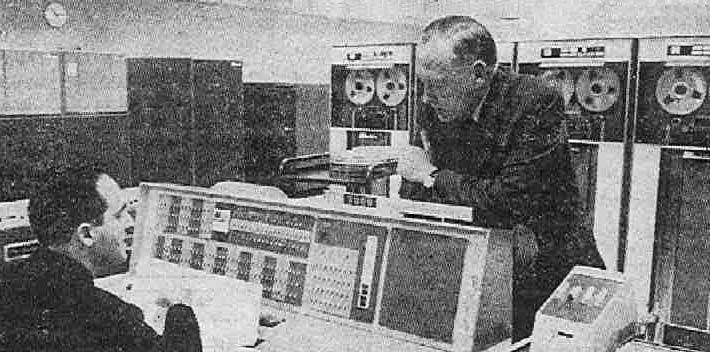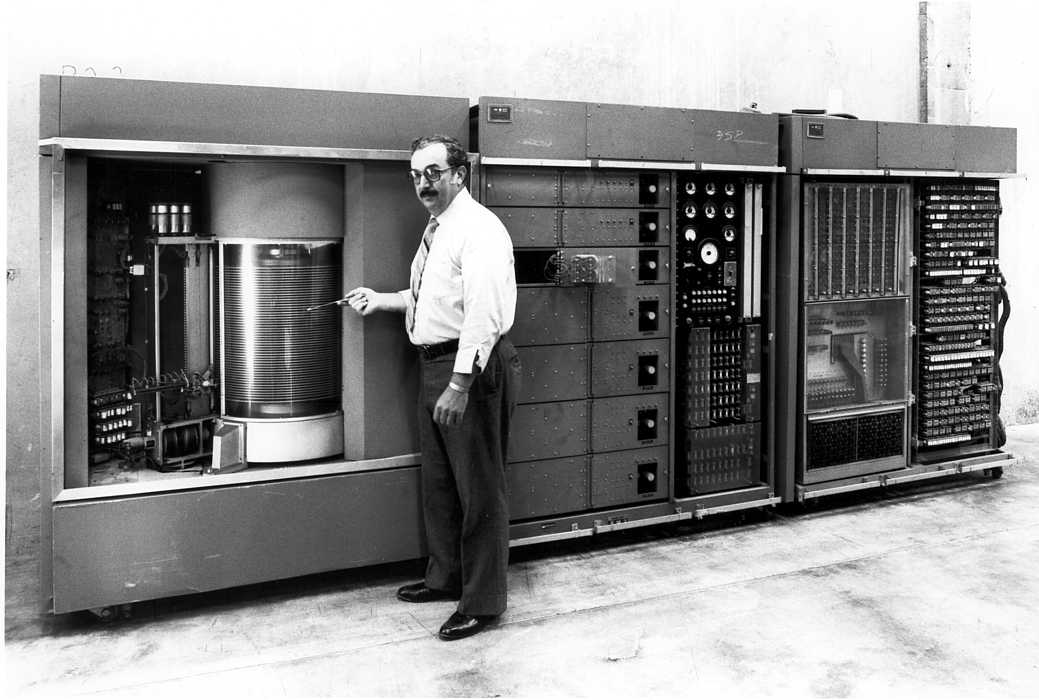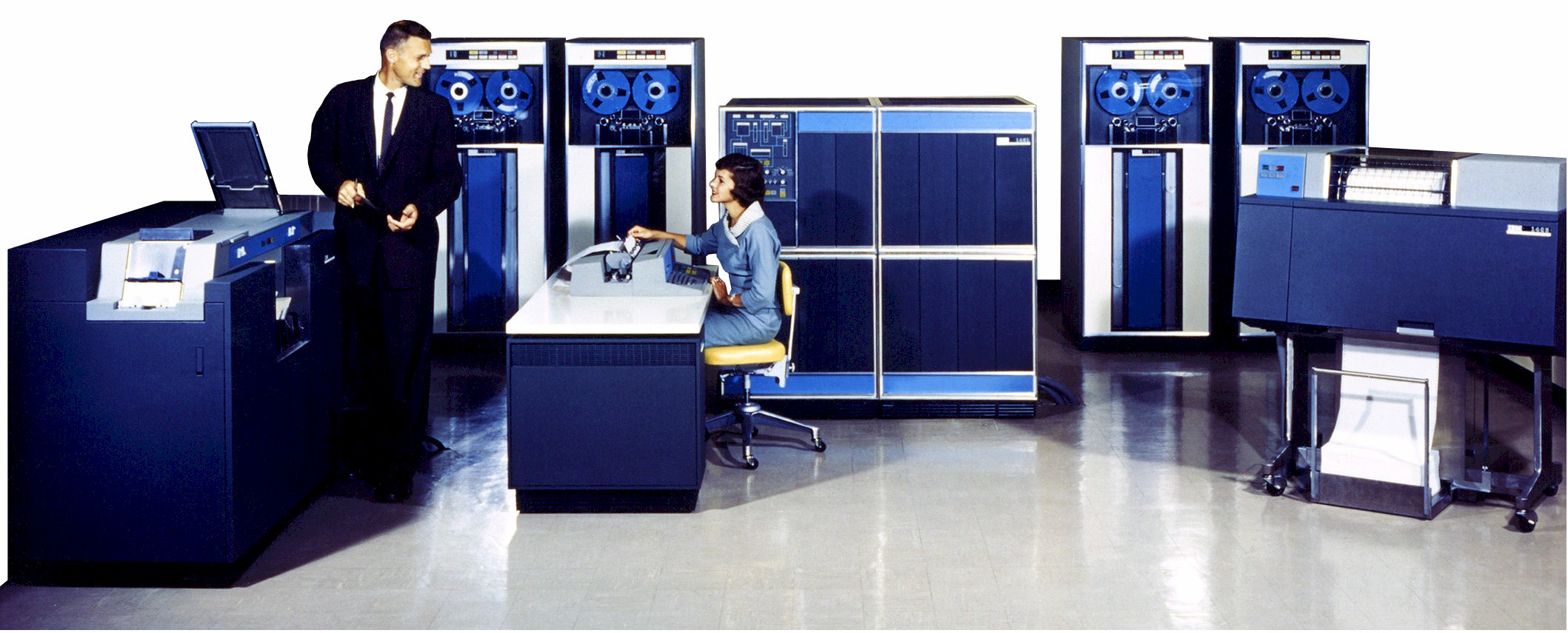|
|
Post by dave on May 17, 2013 15:38:17 GMT -5
Slideshow: Glad to Know You! Soon to Become Irrelevant TechnologiesBy Frank J. Ohlhorst March 7, 2013 9:30 Introduction Technology, like most anything else, comes and goes. Today, IT pros have come to rely on certain technologies, which were once major innovations, yet are destined for the scrap heap in the not too distant future. Let’s take a look at the technologies whose days are numbered and are destined to become nostalgic memories of how we used to do things.The slide show: www.tomsitpro.com/articles/desktops-IT_management-crt-32-bit_OS,5-59.html?utm_source=paid.outbrain.com&utm_medium=cpc&utm_campaign=may2013&#xtor=SEC-1000
|
|
|
|
Post by clarencebunsen on May 18, 2013 6:15:20 GMT -5
Interesting list, for many of the items a person has to be a real techie to appreciate the change. How many people even know how many bits their current OS can recognize much less care? There is some fuss when some long used piece of software won't play on a new computer, but Microsoft has done a good job over the years of making new offerings backwards compatible some these complaints are not deal breakers. I have to give them credit for that.
Everyone has seen the big changes in TV's. I would imagine the same & more applies to oscilloscopes. I haven't been in an electronics lab in a long time. I suppose I would neeed a bit of retraining to operate one.
For much of my career, I worked designing and manufacturing heads for tape data drives. I would have said that business died in the mid 1990s but I guess the enormous amount of archived data has kept it going for another 20 years. The last two major customers I had for 7 track heads (technology developed in the 1950s) were the IRS & the Navy.
I've seen the death of hard disk drives predicted so many times that I'll probably be caught by surprise when it happens.
Floppy disk drives didn't make the list. I guess they have died. My time in that business was short (1979-83). For that time it seemed like the opportunities were unlimited.
|
|
|
|
Post by dave on May 18, 2013 6:45:26 GMT -5
Speaking of floppies, not the early ones that were in fact floppy, but the later 1.4 MB disks ... the largest program I remember loading was Microsoft Office. I think it had seven to 9 disks, which would top out under 15 MB. I routinely download programs today that are that size or larger. Gimp is twice the size at 30 MB. Just the audio drivers for my SoundMax card are 19 MB. I'll bet a download of Microsoft Office today would be much, much larger than 15 MB. But I can't believe there has been a proportionate increase in function. Not that much.
RE death of hardrives. They're probably making too much money on them to kill them. Not per byte, of course, but per unit. Memory sticks are still expensive, even though the amount of time they've been on the market argues for cheaper prices by now. So I don't know. It's probably all pricing rather than technology anyway.
As far as Microsoft, they lost all credibility with me during my Windows 8 debacle. And it wasn't Win8 itself I disliked that much, it was the lying uSoft did before the conversion about how little would be affected. Their pre installation software that evaluated the potential problems with the conversion missed by a mile.
|
|
|
|
Post by clarencebunsen on May 18, 2013 8:58:54 GMT -5
Yea, I'm not a big fan of Win 8. Too much stuff that has to be searched for; I'd rather have it close at hand. Also too much which seems to be changed just for the sake of change not for functional improvement.
I liked and continue to like Win 7 but I know you had issues with it. When I ran the Win 7 upgrade adviser on my XP machine it came up with a few issues & I elected not to try.
The version of office from the mid 90s came on 23 5.25 inch floppies. I don't mind the newer versions with the ribbon rather than drop down menus but it added no functionality for me. I still use an old version of Office on the XP and it works fine for me as long as I have the free add on to convert from docx to doc.
|
|
|
|
Post by dave on May 18, 2013 12:51:28 GMT -5
I didn't mind Win 8 so much, it was the so-called upgrade that lost my files and did other strange things. All could have been stipulated before the conversion. I ran the software that was supposed to tell me of any potential problems and it said I'd have none. Hah!
|
|
|
|
Post by Ralph on May 19, 2013 2:08:15 GMT -5
I can see where hard drives are changing over from platters to SSD's, and I can see why.
I have an IBM Lenovo X-40 that had its HD die last year. I debated over whether to replace it or not because it was a little dated and just not that quick anymore, but I love it's compact size and the fact that it runs an entire OS instead of the new "netbooks" that only have starter OS's.
After almost having a stroke over the cost of a new HD for it (the X-40 uses a micro-HD) I started researching the SSD's. I wound up purchasing a 32GB KingSpec SSD for less than half the price of the IBM micro drive.
The X-40 now boots and runs faster than my wife's year old Lenovo laptop!!
I have even thought about upgrading it from XP to Windows 7 if I can find the right drivers for it.
|
|
|
|
Post by clarencebunsen on May 19, 2013 6:27:48 GMT -5
I'm not putting down SSDs. They are amazing devices and I marvel at the speed, capacity and ever decreasing prices.
My comment was based on hearing predictions for at least 25 years that hard drives were soon to be replaced. Instead their capacity and price per bit have improved steadily over that time. They are mechanical marvels. For less than $100 you get a device with platters rotating at 10,000 TPM, heads flying above those platters micro-inches away and stepper motors positioning those heads at tolerances of micro-inches.
I think about the heads I designed and built with cores which could be seen by eye and coils wound from magnet wire and I can't help being impressed by what is done today. (The same applies to the integrated circuits being put into every device in our lives.)
Hard drives may be on their way out but they've had a long and useful run.
|
|
|
|
Post by Ralph on May 20, 2013 0:29:07 GMT -5
Oh I think it may be a while before they are at the end of their road.
While the one I got was great, I was told to stay away from any larger than that for the timebeing as they were a little unstable.
Though I have seen them coming out in some of the new laptops as of late.
I have a Western Digital 1TB My Book which holds all of our files, so it will be a loooonnng time before I upgrade that.
|
|
|
|
Post by clarencebunsen on May 23, 2013 13:46:25 GMT -5
Might as well add the Digital Goddess to the discussion.
|
|
|
|
Post by dave on May 23, 2013 15:54:28 GMT -5
I am totally bowled over when people talk in terabytes. It seems inconceivable that any mortal being would have need for so much data. As well, getting that much data on those tiny disks is simply amazing to me.
"R Mac?" Where did she get that pronunciation? We called it the "Ram ack" and we built them. I'll never forget the first time I saw one. I was going to school and working weekends for IBM in Syracuse and spent a summer doing same in Utica before I got married. I drove over to GE Radio Receiver on Bleecker Street (before it went overseas) and they had a 305 RAMAC installed in a carpeted well appointed room set off from their regular punched card operations. This was like the throne room and you didn't enter uninvited, although it was before the days of locked computer rooms. The center piece of the 305 was the huge storage drum that spun around and served out data to the processing unit. Input was batch and still punched card, of course, since interactive terminals had not yet been invented.
The 305's storage drum sat in a large box ... like a triple- size storage cabinet. There was a large window on the access door. Because of an interior service light, you could see drum through the window.
The ceiling lights were always dimmed in the room and the computer operations manager would tell you that was done to cut down on extra heat induced into the room because of the special needs of the computer. That was baloney, of course. I think the guy favored the hushed atmosphere because of the respect that flowed to him as well. I wondered if he would start speaking to the RAMAC and call it HAL.
I remember seeing a 305 RAMAC in Syracuse the next year, but they were soon replaced by System 360. I don't think the most popular precursor to the S/360, the 1401, ever came up to the level of a 305 in overall performace. But the 305 certainly didn't reach the limits set by the 7070 or 7090, another line of computers developed originally for the military that were still around after the introduction of the 360.
|
|
|
|
Post by dave on May 23, 2013 16:05:26 GMT -5
IBM 7090 IBM 305 RAMAC storage drive IBM 305 RAMAC storage drive IBM 1401 System with tape drives  IBM System 360  I taught diagnostic software routines on the Model 30 in Endicott. in the late 1960s. The largest we had on the floor had 64 KB main memory. We had disk drives, but at that time most operations were batch and loaded by punched card.
|
|
|
|
Post by clarencebunsen on May 23, 2013 17:03:39 GMT -5
And in the background all those refrigerator sized tape drives, the heads of which occupied so much of my life. The max data capacity of a reel of 1/2 inch tape was 140MB. Into the 90s the fastest way of transmitting a large amount of data was to put a reel of tape into a Fedex overnight package.
|
|
|
|
Post by dave on May 23, 2013 17:19:42 GMT -5
That's true. I'd forgotten the size of a reel of tape. 140 MB was a lot of data back then. I remember when I first opened up a 2401 drive. I had to learn it (through classes, not just discovery) and turn around and teach repair of them. Those vacuum columns and the control circuitry for rolling the tape back and forth just enough fascinated me. And do you remember LRC and CRC? Basic check schemes for tape - longitudinal redundancy check and cyclic redundancy check, for error detection. What was the scheme for error correcting? I think CRC could do a little guessing, but later they invented a scheme that could guess what bits dropped and with more than 98% accuracy fill in the missing bits.
|
|
|
|
Post by clarencebunsen on May 23, 2013 20:13:33 GMT -5
You've got me on the error correction scheme. We had a room full of tape drives used as polishing machines. The tape contact surfaces of the heads were hard coated either with chrome or a ceramic which was plasma sprayed on. At tape speeds of up to 200 IPS a small defect in the polished surface would destroy a tape.
The real trick was that we had to adapt these drives to polish heads for a wide variety drives each with a different tape path. A German physicist who worked for us developed a program to design adapter plates. It ran on a Radio Shack TRS-80. So little memory on that that he couldn't use real prompts, just a blinking cursor when an input was needed. He just remembered where he was in the program and entered whatever data was required.
|
|